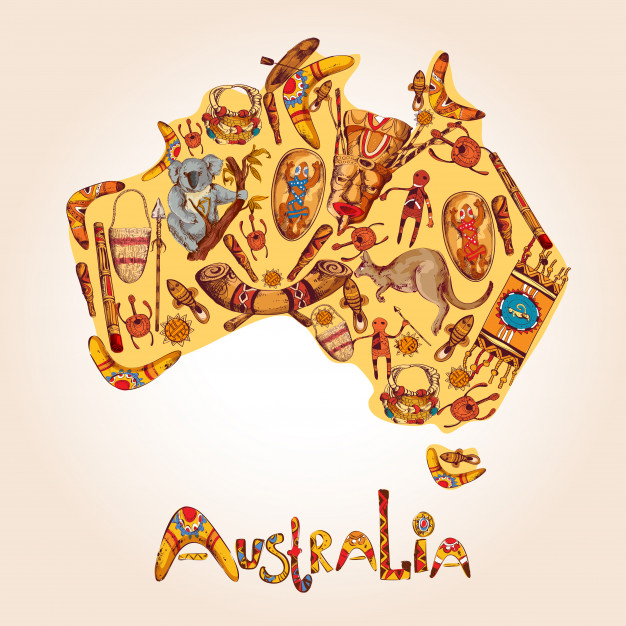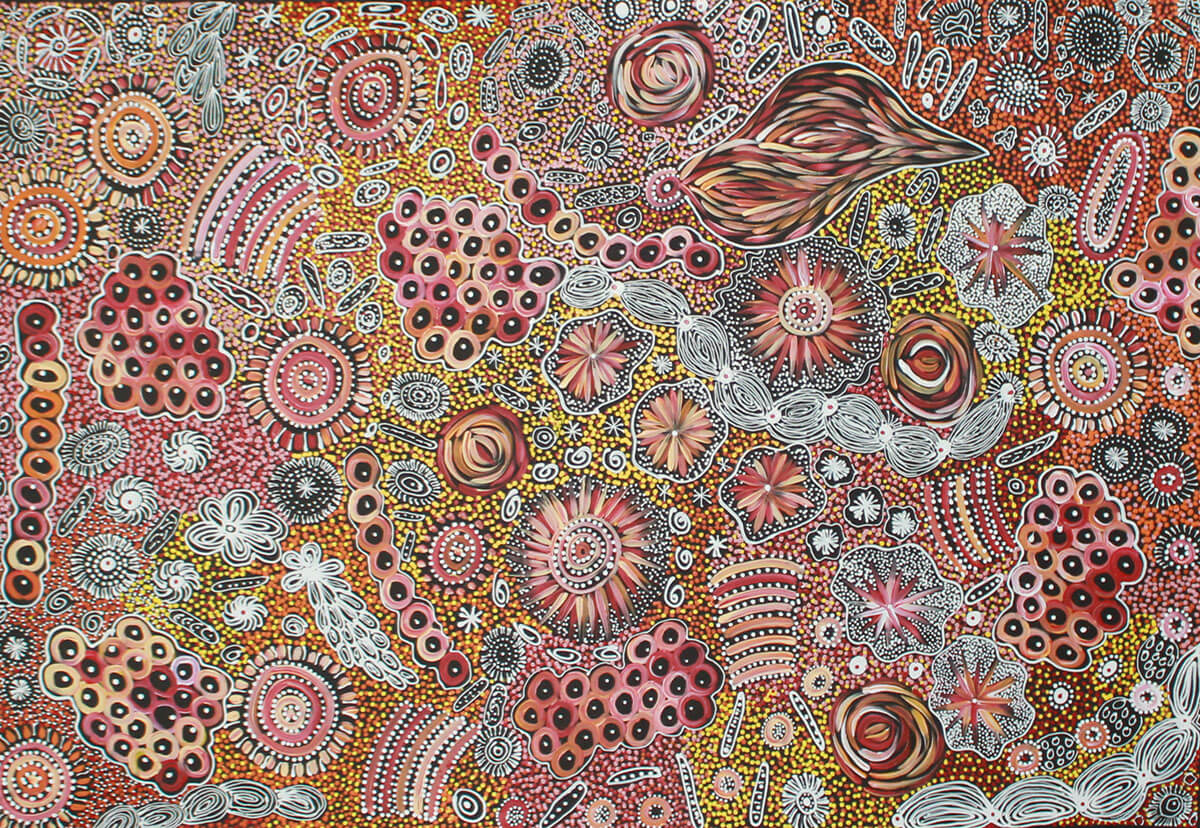The Definitive Guide To Modern Aboriginal Art
Aboriginal culture is rich and ancient; the art powerful and inspirational.

50,000 Years of Rich, Living History
Australia’s indigenous community has more than 50,000 years of rich and living history. One will be able to immerse themselves in Aboriginal culture. Australia has a widespread of aboriginal art throughout the continent.
Aboriginal people around the tell their tales and share the essence of their traditions in the form of Modern Aboriginal art. Their Aboriginal paintings are beautiful, like many geometrically organized art.
Since the first desert works were established in Papunya in 1971, the contribution of contemporary Aboriginal art in Australia has become increasingly significant.
Indigenous art collectors have a strong association with indigenous art, as each work tells a strong story. The works, from rock art and engravings to fabric and body art, are artfully versatile.
In the last few years, the beauty and importance of each work have ignited demand. Selling for millions in global auctions the largest indigenous piece sold in 2007 was $2.4 million.

What color we generally use in Aboriginal art
Because of the multiple variations the indigenous groups select color palettes, their concept and meaning can be different, but some basic patterns can be recognized in several sections.
In several cases, artists use white dots to describe structural elements that shape a tale using earthly colors and textures and other colorful dots.
Some groups tend to paint within the selected range and restrain their pallets to only a few standard colors, while others encourage their members to paint from wider pallets, allowing full-color schemes.
This approach provides more choice and imagination and is becoming increasingly becoming a frequent phenomenon over time with the choice of wider color palettes being used by senior artists.
Black – Earth, Dark, Obscure
Red – Fire, Energy, Vibrant, Power
Yellow- Warm, Fascinating, Water
White – Unity, Peace, Beauty (stars)
Blue- Mystical, Deep, Calm
Green – Silence, Nature, Harmony
Orange- Safe, Strong, Ethereal
Types of Aboriginal Art
Body Paint and Ceremonial Artifacts
Aboriginal body painting is an ancient tradition of art and personal ornamentation, having a profound spiritual meaning for the Indigenous People of Australia.
The cultural practices and the painting on their bodies vary from Native peoples to topographical locations. It is very creative and related to spiritual matters.
The Aboriginals’ peculiar designs and motives show their ties to their community, social status, group, ancestors, mythical fauna, and land tracts.
There are quite strict instructions about how to paint and adorn the body and aboriginal people can not just use any motifs or decoration in their transformation.
They must follow conventional practices that have been valued. The body painting person also takes on the spiritual aspect of the dancing of his ancestor, absorbed in its character.
Each ceremony of hunting is followed by special painting symbols used once again to encourage efficiency.
Aboriginal body art is a special aspect of all ceremonies for Aboriginal people.
They make use of Ochre a soft rock crush it and mix it with animal fat which is used as ash and clay.
Bark Paintings
Aboriginal Rock Art
Aboriginal rock art is the oldest remaining form of human art dated more than 30,000 years of history.
Rock art is an important part of Aboriginal culture and practices in Australia.
Researchers claim that Australia has over 100,000 important rock art sites. More than 5000 are in Kakadu National Park alone in the Northern Territory.
Although there are infinite variations, depending on the desires of the artist or cultural groups, between these two principal designs.
Rock art consists of paintings of rock and caves, engravings, sketches, stencils, beeswax figures, and others.
The main component of rock art is petroglyphs (rock engravings) and photographs (drawings).
The former is made of graved geometric shapes, such as triangles, circles, lines, dots, or animal tracks.
latter creates figurative forms, such as human or animal-drawn or graved silhouettes. These figures may either be basic outlines or complex buildings.
Wood Carving and Sculpture
The wood carving and sculpture industry have experienced a significant increase in the past 20 years.
The findings show that over the past two decades in the development of sculpture has increased rapidly. The majority of pieces are created by a native indigenous group in the area, and significant changes in the age and gender of sculpture producers testify to the social and cultural sustainability of carving production in the region.
Aboriginal objects have now become an important object attracting worldwide attention, some of which have reached extraordinarily high market rates.
With primitive tools, people have carved timber for various purposes: tools for hunting and gathering food, constructing their houses, fishing, and voyaging vessels, defending their lives and territories and celebrating sacred sites, etc.
The carvers and manufacturers of objects i.e., the ancestors have passed on their expertise to successive generations who continue to create those artefacts like the same clever craft as their elders.
Canvas Painting
Traditionally the aboriginal canvas painting started in 1971 in the Papunya when a teacher who was in the community suggested the elders of the community to record their art. Since then, canvas paintings have had great significance in the world of art all around the world.
Textile
The fabric and clothing colours and textures created fresh energetic, creative, and vibrant attractive youths.
The vision of indigenous textiles has come a long way 30 years after those early designs.
The designs are vigorous and lively and move with body flow and form creating a true body art connection
The Difference Between Modern and Contemporary Art
Contemporary aboriginal art and modern aboriginal art have some significant differences:
Ochre is used as the most vital painting material by traditional artists. Not only for body painting and others but also for the home funeral.
In addition to the tools used, modern Aboriginal artists have shown comprehensive skills in the techniques they use for painting and drawing.
A wide variety of new and old school components along with significant strategies in contemporary Aboriginal painting are being used to create beautiful aboriginal art with a modern touch.
One of Aboriginal art’s most amazing aspects is that looking at the piece and hearing the story behind the dots will give you a whole new meaning to what you see.
